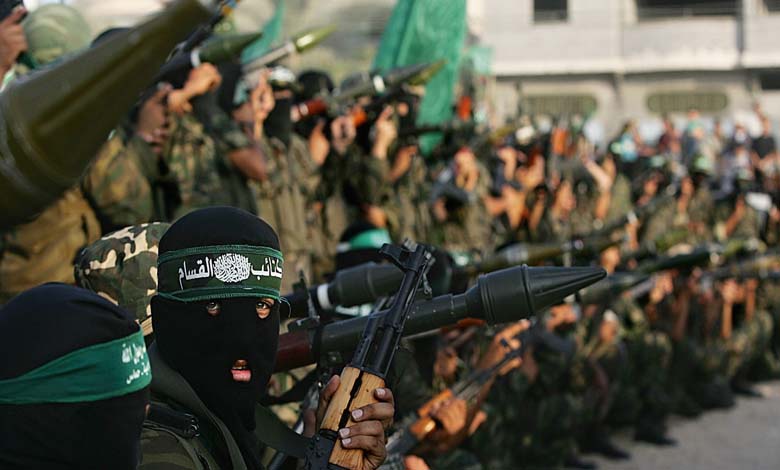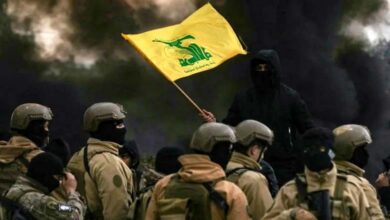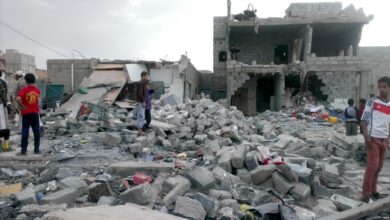Hamas has lost half of its fighters in the Gaza war
Hamas fighters are avoiding prolonged skirmishes with Israeli forces and instead relying on ambushes and homemade bombs

American and Israeli officials have said that the Palestinian Islamic Resistance Movement (Hamas) has lost about half of its fighters during the ongoing eight-month war and is now relying on hit-and-run tactics to thwart Israeli attempts to control the Gaza Strip.
According to three senior American officials familiar with battlefield developments, the number of Hamas fighters has dropped to between 9,000 and 12,000, down from pre-conflict American estimates of between 20,000 and 25,000. In contrast, Israel says it has lost about 300 soldiers in the Gaza war.
One of the officials said that Hamas fighters are now largely avoiding prolonged skirmishes as Israeli forces push deeper into Rafah, located at the southernmost tip of the Strip. Instead, they are relying on ambushes and homemade bombs to strike targets often behind enemy lines.
Many Gaza residents, including Wissam Ibrahim, have also noticed a change in combat tactics. Ibrahim told Reuters by phone: “In previous months, Hamas fighters would intercept Israeli forces, engage them, and open fire as soon as they entered their areas… But now there is a noticeable shift in their methods. They wait for their deployment and then start setting up ambushes and launching attacks.”
The American officials, who requested anonymity due to the sensitivity of the issue, said such tactics could help Hamas continue fighting for months, supported by smuggled weapons into Gaza through tunnels and other reused munitions from unexploded ordnance or captured from Israeli forces.
These extended timelines align with statements made last week by Israeli Prime Minister Benjamin Netanyahu‘s national security adviser that the war could continue until at least the end of 2024.
A Hamas spokesperson did not respond to requests for comment on their battlefield strategy.
In a parallel propaganda campaign, some of the movement’s fighters are filming videos of their ambushes on Israeli forces, editing them, and then publishing them on Telegram and other social media platforms.
Israeli army spokesperson Peter Lerner said the army was still far from eliminating Hamas, adding that the movement had lost about half of its combat forces. He acknowledged that the army was adapting to the changes in Hamas‘s tactics, recognizing that Israel could not eliminate all Hamas fighters or destroy all their tunnels.
“There is no goal whatsoever to kill all and every terrorist on the ground. That is not a realistic goal… But destroying Hamas as a ruling authority is an achievable and feasible military goal,” he added.
Netanyahu and his government are under pressure from Washington to agree to a ceasefire proposal to end the war that erupted on October 7 when Hamas fighters invaded southern Israel in an attack that killed more than 1,200 people and took more than 250 hostages, according to Israeli statistics.
The subsequent Israeli ground and air military campaign in Gaza has destroyed vast swathes of the Strip and killed more than 36,000 people, according to Palestinian health authorities. The United Nations says more than a million people are facing “catastrophic” levels of hunger.
According to Israeli and American officials, between 7,000 and 8,000 Hamas fighters have fortified themselves in Rafah, the last stronghold of the movement.
They say Hamas leaders Yahya Sinwar, his brother Mohammed, and Mohammed Deif, the second-in-command after Sinwar, are alive and believed to be hiding in tunnels with Israeli hostages.
An American administration official said the movement had shown the ability to quickly withdraw after attacks, hide, regroup, and reappear in areas the Israeli army believed to be free of militants.
Peter Lerner agreed that Israel faces a long fight to overcome Hamas, which has been running Gaza since 2006. “There is no quick fix after 17 years in which they have built up their capabilities,” he added.
Over the years, Hamas has built a city of underground tunnels stretching 500 kilometers long. This network, which the Israeli army calls the Gaza Metro, is about half the length of New York City’s subway system. The network is equipped with water, electricity, and ventilation, and houses Hamas leaders and includes command and control centers and weapons and ammunition depots.
Last week, the Israeli army announced it had taken control of the entire land border between Gaza and Egypt to prevent arms smuggling. It also discovered about 20 tunnels used by Hamas to transport weapons into the Strip.
The Egyptian Information Authority did not immediately respond to requests for comment on Israel’s allegations of arms smuggling from Egypt. Egyptian officials have previously denied such operations, saying Egypt destroyed the tunnel networks leading to Gaza years ago.
The war in Gaza constitutes the longest and fiercest conflict Israel has faced since its invasion of Lebanon in 1982.
Netanyahu has resisted international and domestic demands to clarify his post-war plan for Gaza. U.S. Secretary of State Antony Blinken warned that the absence of a roadmap could result in lawlessness in the territory.
An Arab official said criminal gangs had already begun to emerge in Gaza in the absence of authority, seizing food shipments and conducting armed robberies.
The official and two other government sources from the Arab region, who requested anonymity to speak freely, said the Israeli army could face similar security threats to those faced by the United States in Fallujah between 2004 and 2006 after the Washington-led invasion of Iraq.
Widespread violence in Fallujah led to the rise of extremist groups like Al-Qaeda and later ISIS, plunging Iraq into a conflict and chaos it has not fully recovered from despite two decades passing.
Washington and its allies in the Arab region are working on a post-conflict plan for Gaza that includes an irreversible timeline for the establishment of a Palestinian state.
American officials said that when the plan is ready, Washington will present it to Israel, noting that it will be part of the U.S. vision for achieving a “grand deal” to enable the normalization of relations between Saudi Arabia and Israel.
An Emirati official directly involved in the discussions said there is a need to guide the Palestinians to call on countries for emergency assistance in Gaza, adding that it also requires ending combat operations, complete disengagement by Israel, and clarity on Gaza’s legal status, including border control.
He added that this emergency intervention could last a year and possibly be renewed for another year. The aim would be to stabilize the region before rebuilding it.
The Emirati emphasized that starting the reconstruction process requires a more detailed roadmap toward a two-state solution, along with serious and credible reform of the Palestinian Authority.
It remains unclear how the U.S. intends to overcome Netanyahu‘s repeated rejection of the two-state solution, which Riyadh considers a prerequisite for normalizing relations with Israel.
-
Hamas proposes a plan to end the war with Israel in three stages
-
Sharp disagreements among Hamas leaders over prisoner exchange deal
David Schenker, former Assistant Secretary of State for Near Eastern Affairs and currently a senior fellow at the Washington Institute, dismissed any notion of a complete Israeli withdrawal from Gaza.
Schenker said: “Israel says it will retain security control, which means it will constantly send drones over Gaza and will not be restricted if it sees Hamas rebuilding its ranks… They will come back.”
-
Iran explores details of anticipated exchange deal between Hamas and Israel
-
Hamas regains its civil capabilities in Northern and Central Gaza
Former Israeli army chief Gadi Eizenkot, currently a minister in Netanyahu‘s war government, suggested an international coalition led by Egypt as an alternative to Hamas governance in Gaza.
In a closed briefing last week to the Knesset’s defense and foreign affairs committee, he emphasized the complexity of fighting armed groups.
“This is a religious, national, social, and military struggle that cannot be resolved with a knockout blow, but will likely be a long-term war lasting several years,” he said.












